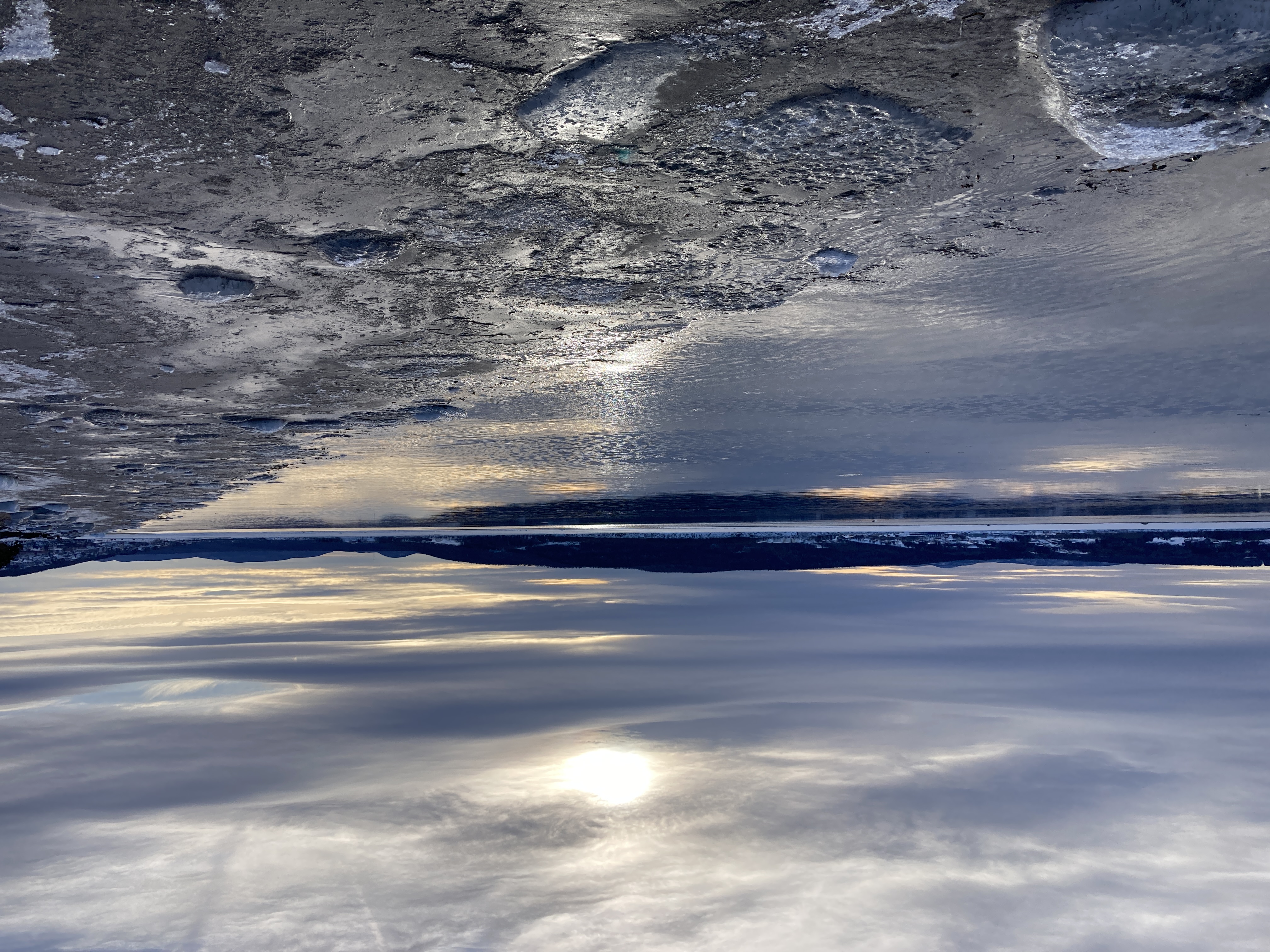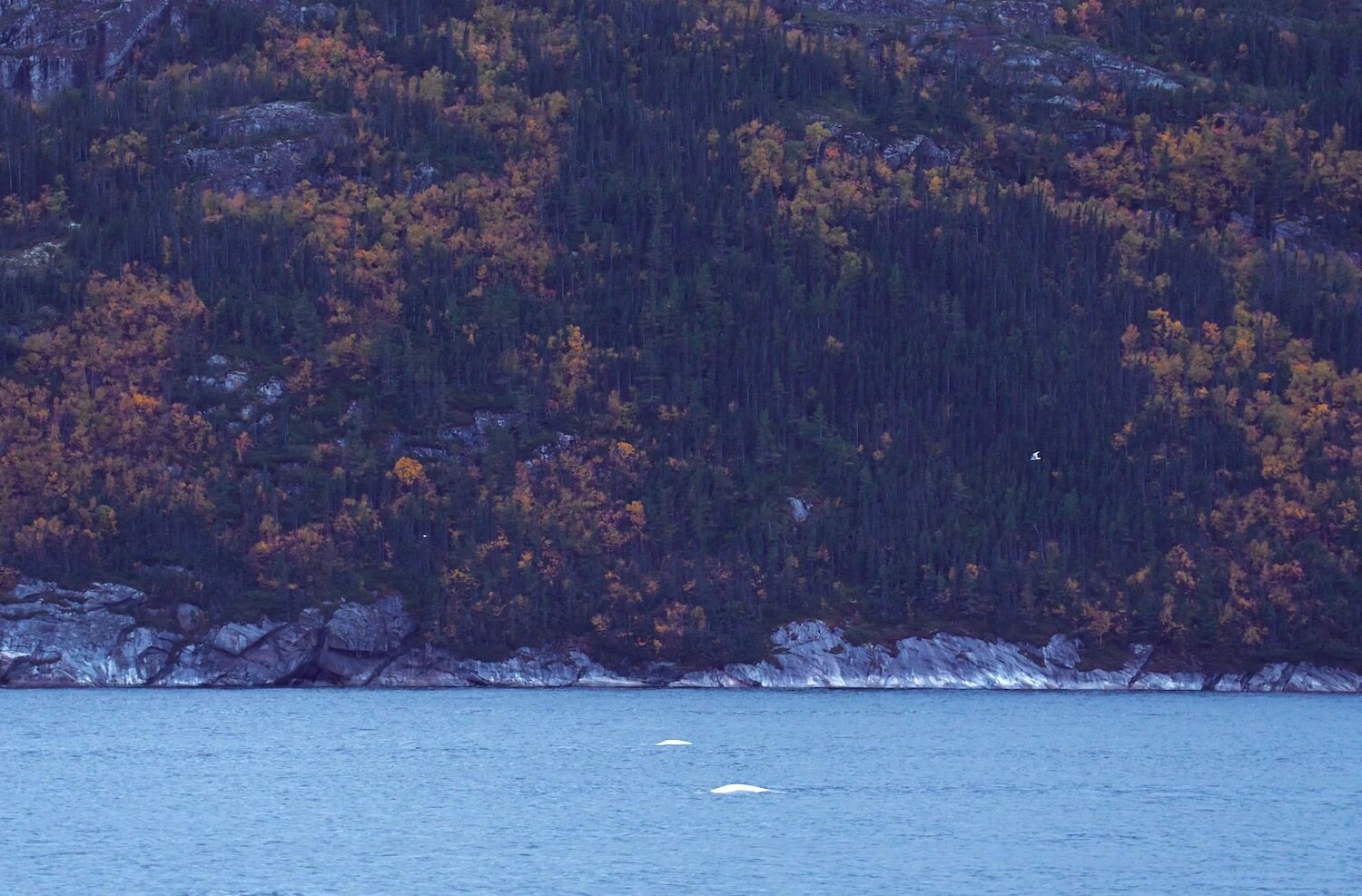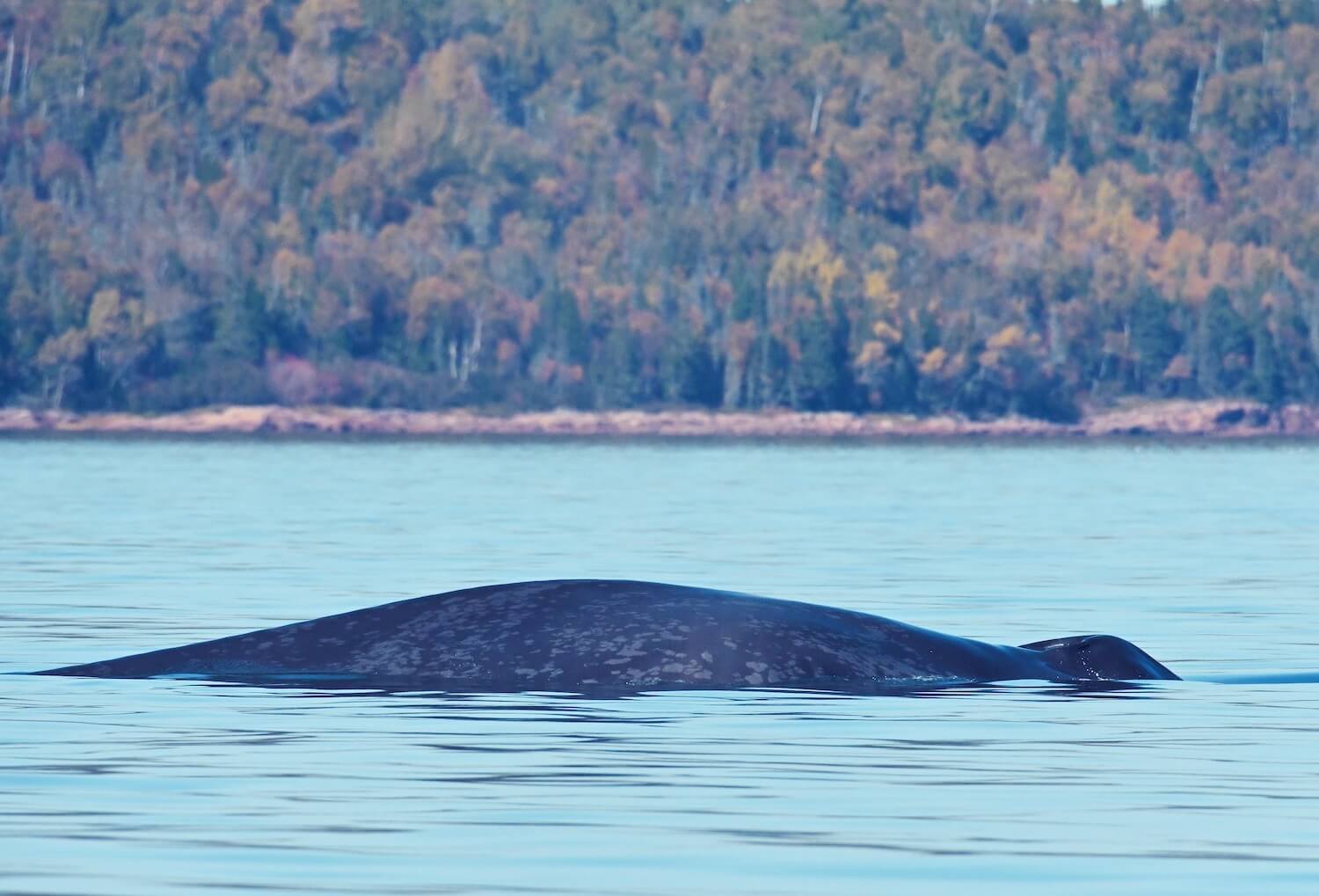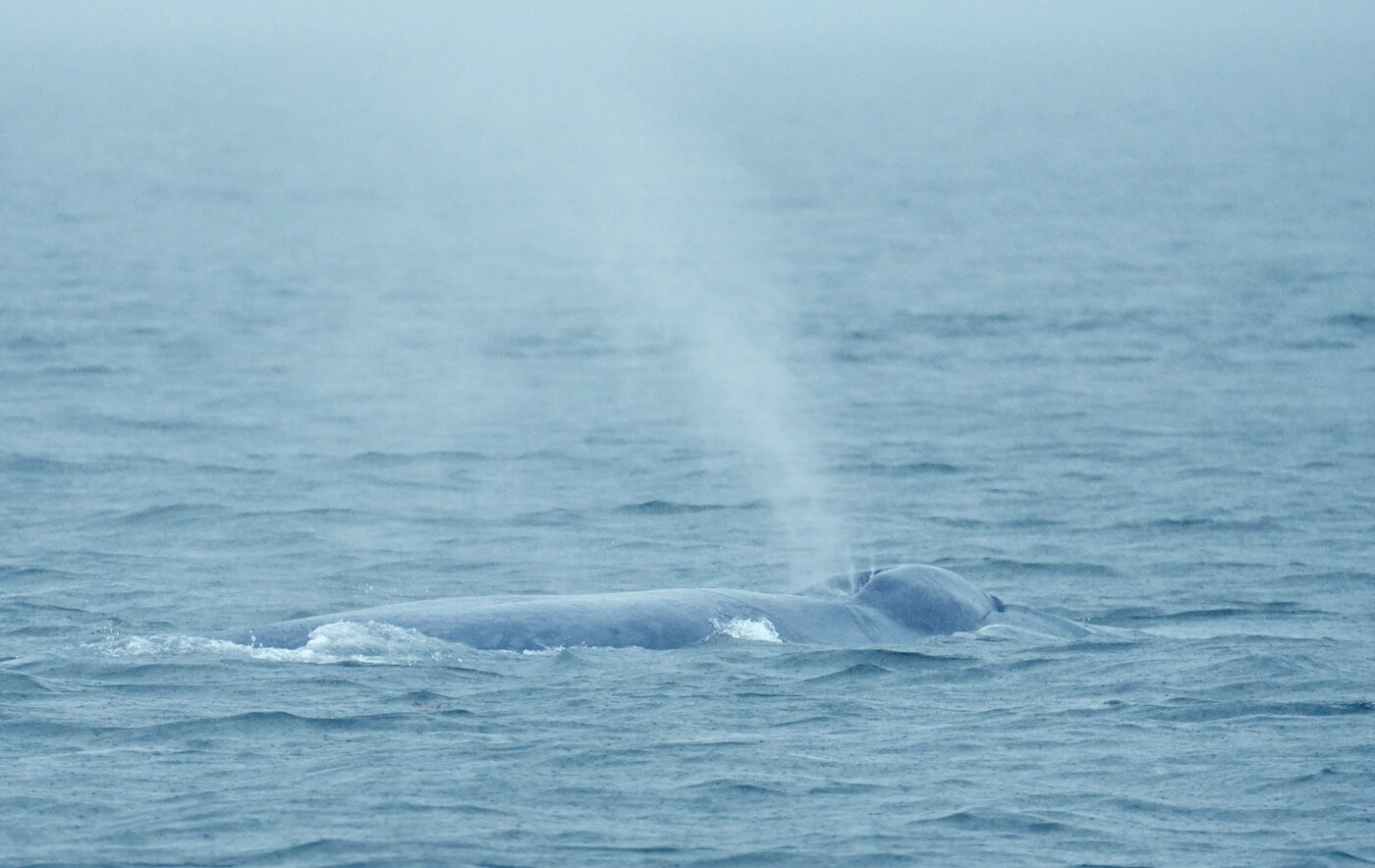If it weren’t for the snow-covered shoreline and the sub-zero temperatures, Franquelin residents could almost be forgiven for thinking it’s the middle of summer, that’s how many whales there are right now! Blue, fin and humpback whales were happily swimming offshore and could be viewed from shore.
One marine mammal enthusiast has lots to tell: “It was like a festival, a carnival even!” The absence of nearshore ice undoubtedly bodes well for whalewatching. On Wednesday morning, marine mammals created some tremendous excitement. “It was incredible… very close to shore,” explains one observer. Three fin whales, one or two blue whales, including one whose peduncle I got a clear look at through my binoculars when it dove! And one humpback whale, which seemed quite small compared to the giants that glided by with their long backs! The humpback did not show its tail, but the arch of its back and the way its peduncle looked when it dove were quite typical!”
Is it normal to see whales in winter?
Winter sightings of humpbacks are uncommon in the St. Lawrence, as most individuals migrate to the Caribbean. As the main purpose of migration is to reproduce and give birth, it is therefore highly likely that these are young individuals that are spending the winter here to feed.
The migrations of blue whales and fin whales are poorly known. While some individuals seem to spend the winter in the Gulf of St. Lawrence, others are believed to travel to warmer latitudes along the east coast of the United States and even as far as Bermuda.
Seals in Gaspésie
In Gaspé Bay, it’s seals that have been turning heads. One resident reports the presence of seals drifting on the ice off Cap-aux-Os. Another dedicated observer also observed good numbers of pinnipeds: “A hooded seal and a little over a hundred harp seals were seen from Penouille looking toward Sandy Beach, all on the ice.”
Hooded seals are rare visitors to the St. Lawrence! These marine mammals are big: males can sometimes measure over 3 metres long and weigh over 400 kilos. The species lives in the North Atlantic and the Arctic. In early spring, the seals move southward along the Maritimes to mate and give birth to their pups on the pack ice. Adults then head back north, mainly around Greenland, where they will spend the summer.
Right whale news
The North Atlantic right whale breeding season continues. At the time of writing, 14 births have been recorded. However, this remains far below the threshold of 20 calves for a season to be considered productive and 50 for the population to increase. Whales Online is publishing a separate article on the topic this week. We encourage you to read it to learn more on the matter!
Thanks to all our collaborators!
Special thanks go out to all our observers who share their love for marine mammals with us! Your encounters with cetaceans and pinnipeds are always a pleasure to read and discover.
On the water or from shore, it is your eyes that give life to this column.
Laetitia Desbordes
Audrey Hébert
Diane Ostiguy
Sandrine Papias
Renaud Pintiaux
Pascal Pitre
Andréanne Sylvain
Marielle Vanasse
And all those we left out!
Additionally, we would like to acknowledge the following teams that also share their sightings:
Station de recherche des iles Mingan (MICS)
Réseau d’observation des mammifères marins (ROMM)
Réseau québécois d’urgence pour les mammifères marins (RQUMM)
Groupe de recherche et d’éducation sur les mammifères marins (GREMM)
Would you also like to share your observations?
Have you seen any marine mammals in the St. Lawrence? Whether it’s a spout offshore or just a couple of seals, drop us a line and send your photos to [email protected]!








